order

Coleoptera
“Adult Beetles”

Coleoptera
“Larval Beetles”

Diptera
“True Flies”

Ephemeroptera
“Mayflies”

Hemiptera
“True Bugs”

Lepidoptera
“Aquatic Caterpillars, Snout Moths”

Megaloptera
“Alderflies, Dobsonflies, and Fishflies”

Odonata
“Dragonflies and Damselflies”

Plecoptera
“Stoneflies”

Trichoptera
“Caddisflies”
family
Gomphidae
genus
Lanthus
“Clubtails”
Genus Overview
Lanthus includes only 2 North American species. Larvae live in sandy or silty pools of rocky spring-fed brooks, burrowing shallowly to wait for prey to wander near and be snatched by the retractile labium. When removed from the water, they feign death for several minutes and are apt to be missed by the careless investigator.
Characteristics
POLLUTION TOLERANCE
Southeast: 4.9
Mid-Atlantic: 5
0 = least tolerant, 10 = most tolerant
FEEDING HABITS
Engulfer / Predator
MOVEMENT
Burrower
DISTRIBUTION
Widespread (east of the Rocky Mtns.)
HABITAT
Lotic-depositional
Lotic-erosional
Lotic-erosional
Diagnostic Characters
Order
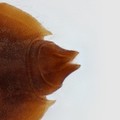
Abdomen with 5 Sharp Stiff Points or 3 Gills
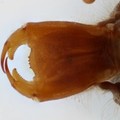
Labial Mask
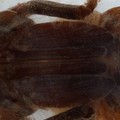
Two Pairs of Wing Pads
Family
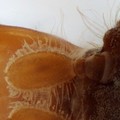
4-Segmented Antennae

Flat Mask
+ Expanded Character List
Order:
Nymph with mask-like labium below chewing mouthparts. Wings developing in wing pads. Segmented legs present, each with two claws.
Family:
Suborder Anisoptera (i.e., Dragonflies: stout body shape, head more narrow than thorax and abdomen, end of abdomen with 5 short pointed projections, external gills absent). Labial mask flattened, without hair on palm of inside of mask (premental setae) or usually without setae along margins of palpal lobes at end of mask. Ligula (distal margin of labial mask) without median cleft. Antennae each 4-segmented, although 4th segment usually small. Fore- and middle tarsi each 2 segmented. Mature larvae 23–40 mm long, rarely to 65 mm.
Genus:
Palpal lobes (distal end of labial mask) rounded, without apical hooks and usually bearing only microscopic teeth on inner margins. Large antennal segment 3 nearly oval, inner margin convex, about 2/3 as wide as long, widest in proximal half. Antennal segment 4 small, rounded, knob-like, much less that 1/4 as long as segment 3. Middle legs not closer together at base than forelegs. Fore- and middle legs usually with at least vestigial burrowing hooks on tibiae. Wing pads parallel along midline. Abdomen much longer than broad, not flat (as in Hagenius). Middorsal hooks/knobs absent from abdominal segments. Abdominal segment 7 without lateral spines, segments 8 and 9 with very short lateral spines. Distal margin of prementum usually with 4 denticles; sides of prementum parallel toward base. Abdominal segment 9 with long, slender, claw-like lateral spines. Abdominal segment 10 much less than twice as long as any preceding segment.
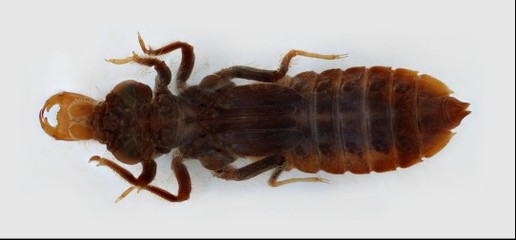
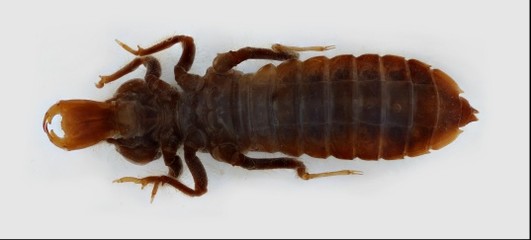
Dorsal
Ventral



